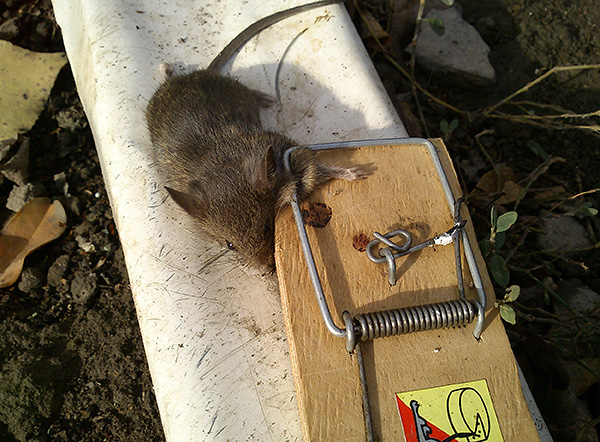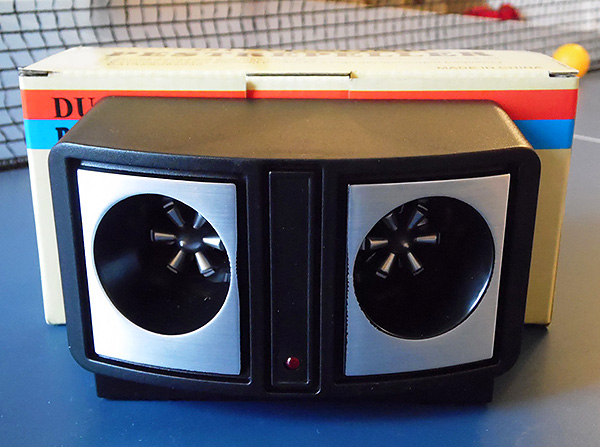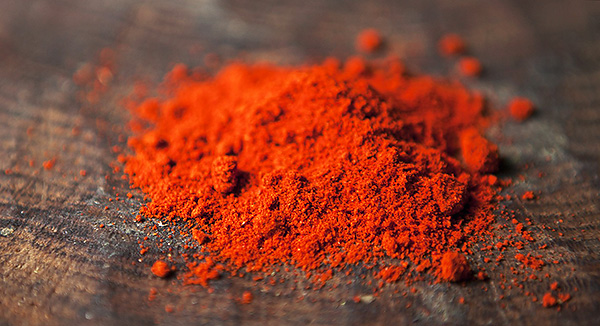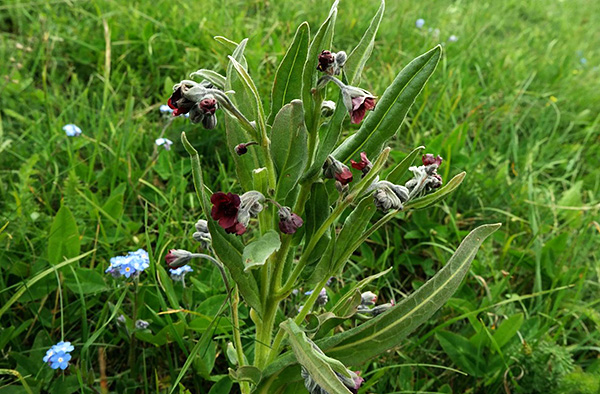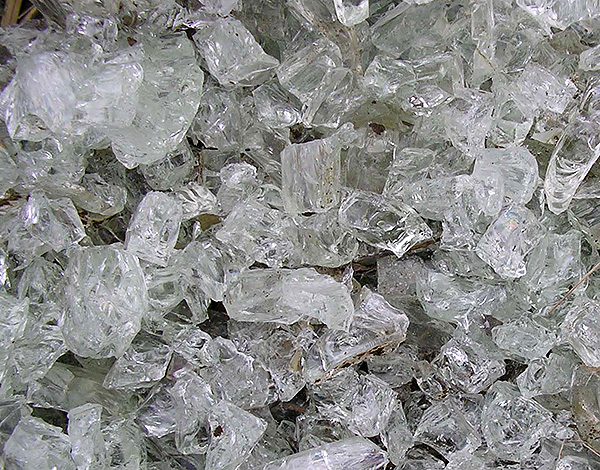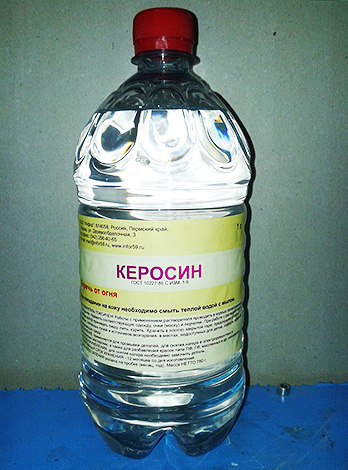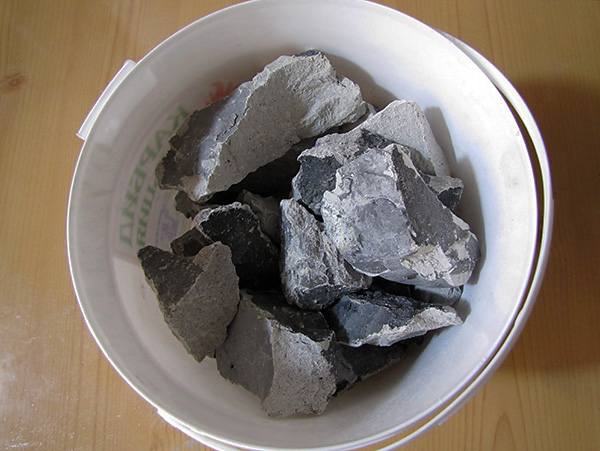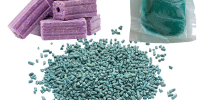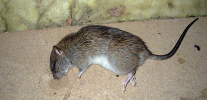
If you decide to independently choose a remedy for rats, then you may have already appreciated how difficult this task can be for an unprepared person. Moreover, it is difficult if you look for a tool that will be both effective, safe and relatively inexpensive.
There are many options for rat poisoning on the market, and it’s easy to get confused. Moreover, some unfortunate rodent is offered to poison, kill with traps, scare them with a repeller or catch on a piece of cardboard coated with special glue for rats and mice.

And at first glance, each of these options seems to be good in its own way, but it is not clear which one to prefer. It is even more difficult to choose an effective remedy for rats according to the promises of sellers, because it is often difficult to understand where the truth ends and where the advertisement begins.
Well, then we will streamline all this chaos and choose from the means available today used against rats and mice, those that are best used at home ...
Types of Rodent Controls and Why Rat Poisons Are So Popular Today
To begin, let's classify the means of rats and mice by the mode of action.
All of them can be divided into the following groups:
- Poisons, including those prepared according to folk recipes. In terms of ease of use and effectiveness, it is precisely the poisons that lead: some of them are so effective that it is enough to decompose the drug once in suitable places to forget about rodents for a long time. We will talk about the important nuances of choosing and using such tools a little lower;

- Traps (lethal and live traps, including glue traps). The main disadvantage of traps of various designs is the need to charge them, inspect and remove the corpses of killed rats. It’s even more troublesome to work with live traps and glue traps - after all, rats and mice get caught in them alive, and then the rodent fighter must either take a sin on his soul by killing the animal with his own hands, or, say, take out the prey out of town and let him out nature;

- Repellers (ultrasonic repellers and chemicals, including those based on folk recipes) are also quite popular and sometimes really give good results. However, the main problem here is that far from always and not all rodents try to leave the territory protected by a sound or odorous deterrent, and sometimes they even get used to it.

On a note
Generally speaking, so-called fumigants - poisonous gases also belong to poisonous agents. However, they are absolutely not suitable for use at home, they are used only by professional rodent fighters at industrial facilities.
We do not consider rat traps here either, because if you need a remedy against rats and mice, it means that neither you nor your neighbors have such a cat. And to acquire an animal only as a "means" is unethical.
As for the funds from mice and rats in the form of poisoning - today there are many drugs on sale with different active ingredients:
- Preparations based on blood anticoagulants are the most modern, most effective and most often used;
- Krysid - still used, including at home, but losing competition with blood anticoagulants and therefore rapidly losing its relevance;
- Means based on phosphides of certain metals are now banned for use at home, but sometimes used at various enterprises. When interacting with water (for example, air moisture), an extremely toxic phosphine gas is released;
- Completely forbidden today - preparations based on arsenic (arsenites and arsenates), strychnine, cyanides and some other toxic substances;
- And finally, folk remedies poisoning rats (usually from natural raw materials).
And since the poisons are so popular and effective, let us dwell in more detail on those that are acceptable for use in everyday life and really allow you to quickly and easily get rid of rodents.
Remedies for rats based on blood anticoagulants
The main advantages of these tools are their high efficiency. This is largely due to the fact that blood anticoagulants do not act very quickly: the same ones, for example, strychnine or cyanide kill a rat much faster, and in smaller doses. However, the skate of drugs based on blood anticoagulants consists precisely in the “delay” of action.

Look: if a rat tastes very little bait with strychnine (or arsenic), it quickly feels the symptoms of poisoning, but does not die. And these animals, because of their innate caution, try everything new for crumbs. So, will there be a rat that has poisoned, but survived, the next time there is the same bait? As practice shows, with a high probability it will not, and it will let its relatives know that this tool can not be tried.
But if a rat eats a small amount of a blood anticoagulant, it will not feel anything at all for several days. Such drugs do not cause any symptoms in sublethal doses. The next day, the animal "with a light heart" and well-being will eat this poison again, and then again.
Blood anticoagulants have pronounced cumulative properties (accumulate in the body), and when the amount of poison reaches a critical level, the blood practically stops clotting in a rat. This is fatal - internal bleeding begins, which kill the pest.
It is due to the fact that rats are not afraid of anticoagulant-based drugs, these drugs are more effective than most other poisons. In addition, rodents practically do not develop resistance to them. To date, these funds are considered the most preferred for home use, and for use in agriculture, and industrial facilities.
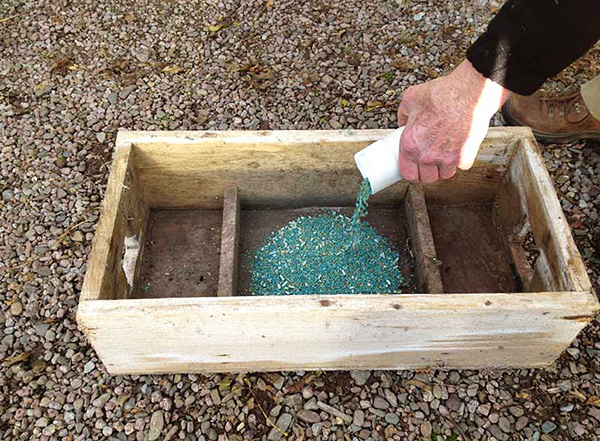
Blood anticoagulants are divided into two generations. The first includes substances that the animal must eat several times for poisoning (their lethal dose is too large and is not absorbed in the rodent's digestive tract after a single meal of the poisoned bait). Blood anticoagulants of the second generation work effectively, even if the animal ate poison only once - the lethal dose is less, and all of it can be absorbed immediately.
The first generation anticoagulants include:
- Warfarin, or zookumarin (means Zookumarin, Zookumarin Neo, Zoopasta);
- Difenacin (drugs Hedgehog, MEF, Ratindan, Rotendant, MEF, Hedgehog);
- Tryphenacin (Poison Ethylphenacin-paste, Geltsin);
- Chlorfasinon (briquettes from ratidion-HF rats);
- Coumatetralil (Racumin Powder).
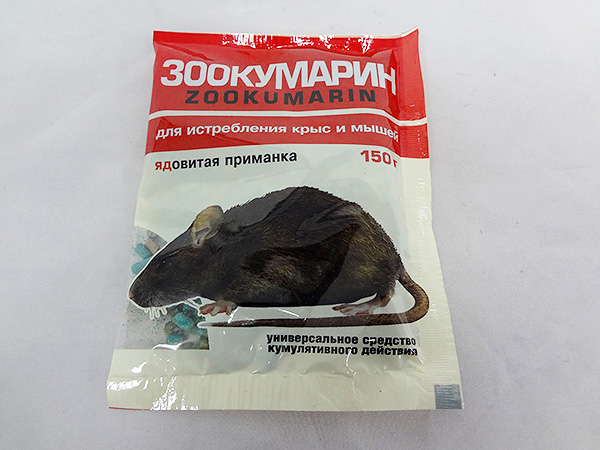

Second generation anticoagulants:
- Flocumafen (poison Storm, Goliath);
- Broadifacum (means Alt, Rat, Boycott, Mortorat, Rat Death No. 1, Varat, The Nutcracker, Cyclone, Efa-Shock, Kilmais);
- Isoindan (Izocin concentrate for the manufacture of poison alone);
- Bromadiolone (preparations Rat Death No. 2, Clean House, Efa, Zernocin, Rattidion, Norat, Blockade);
- Difenakum (poison Ratol and Tsunami-Extra).
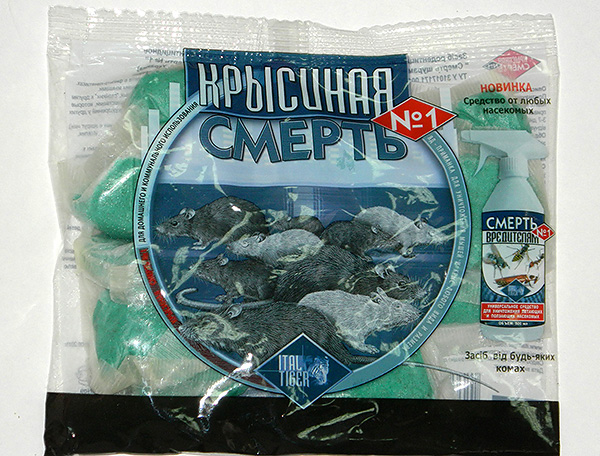
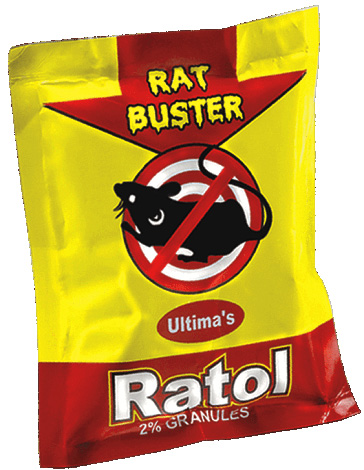
Of all the poisons that prevent blood clotting, flocumafen is considered the most powerful, and the most effective and at the same time affordable for home use based on it is Storm (manufactured by BASF).
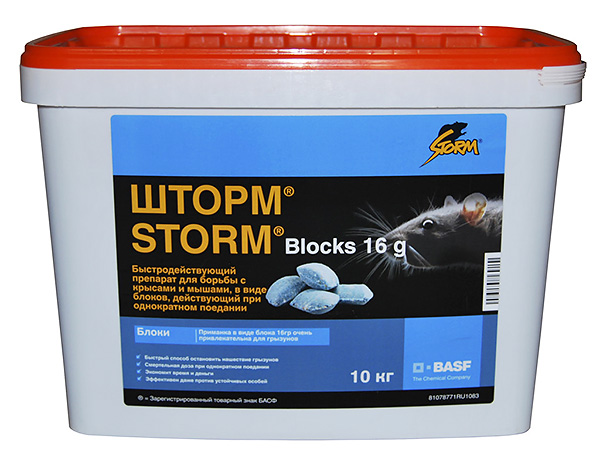
Interestingly, the majority of anticoagulant-based drugs are fairly inexpensive.They can be bought on the market for 30-100 rubles, they are sold in small packages (often several tens and hundreds of grams) and are almost ideal for home use.
Feedback
“As for me, the best cure for rats is Zookumarin. We somehow poisoned cockroaches several times using different Raptor methods, I was looking for a drug from rats of the same company, but I could not find, I had to experiment again. This Zookumarin in the market in small bags is on sale, but you can negotiate with the seller and take in bulk. I took it because we have a warehouse, there are a lot of rats. Really helps! Rats eat these pills for a sweet soul, after that just go, collect carcasses. By the way, they die as usual, there is no mummifying effect, although it is written about it on the package. If you do not find and throw in time, then stink mercilessly. But the main thing is that the remedy is effective ... "
Oksana, Nizhny Novgorod
Krysid and rules for its use
Rat is a poisonous substance whose chemical name is alpha-naphthylthiourea (abbreviated as ANTU). It was previously especially widely used as a rodenticide due to its very high toxicity to rats and mice.
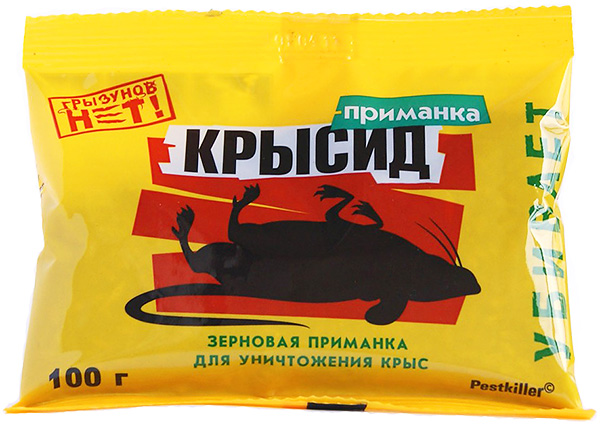
However, Krysid is significantly inferior in efficacy and safety to drugs based on blood anticoagulants. Due to its volatility, people and pets cannot be in the room where it is used - poison can enter the respiratory tract and cause poisoning.
In addition, due to its acute action in individuals of rats and mice, individuals quickly appear that recognize it as poison and do not eat it.
On a note
Practice shows that if you do not alternate rats with other means, then after 2-3 weeks the rats stop touching it. In the end, it will help if you try to poison them with one or two rats, but with a large number of pests, the remedy will most likely not cope.
In any case, the Rat does not have any advantages over drugs based on blood anticoagulants, but the disadvantages are obvious. Therefore, today it makes no sense to buy this remedy for use at home.
Phosphide Based Products
This group includes products based on zinc phosphide, magnesium phosphide and aluminum phosphide, the first of which is best known - zinc phosphide. All of them react with air moisture, releasing phosphine - a poisonous gas from which rats die (as well as all other mammals and insects caught in the treated room).
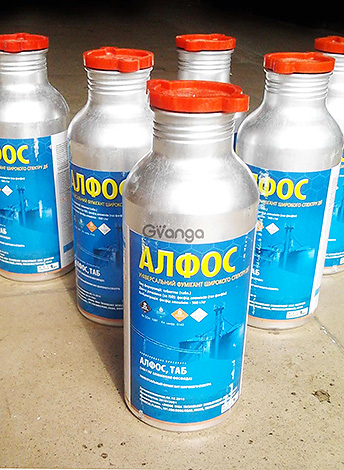
Including phosphides are dangerous for humans and all domestic animals, and therefore their use in residential areas is strictly prohibited. They are used only at industrial enterprises, in workshops, from which all workers are previously withdrawn.
So if you read somewhere that phosphides (or phosphine) perfectly kill rats, then buying such funds for use at home would not be a good idea.
Folk poison recipes for rats and mice
Poisons for rodents, prepared according to folk recipes, are significantly inferior to industrial preparations in their effectiveness: in many cases, pests bypass them and do not eat. Nevertheless, sometimes such remedies really work, and not bad, and therefore, if desired, it is quite possible to try any of them at home or in the country.
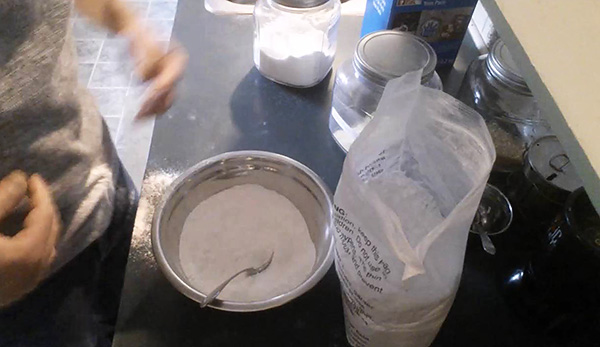
The most famous are the following “folk art products”:
- Gypsum in milk - acts by thickening gypsum in the intestines of rats, blocking it and developing obstruction. In common parlance, such a syndrome is called intestinal inversion. It works poorly, since the animals easily recognize the taste of gypsum already at the first sips of milk;
- Quicklime with sugar - theoretically works due to the heating of lime in the stomach of the animal and the erosion of its walls. There is no reliable data on the effectiveness of this remedy, but in any case it is difficult to expect that rats or mice will not feel the taste of caustic lime in the mixture and will eat such poisoned sugar;
- Cork shavings mixed with chopped cat food or porridge. In sufficient quantities, when swelling in the intestine can also cause obstruction;
- Tincture of chilibuha (vomit), added to a liquid bait, for example, milk or soup. It is very toxic due to the content of strychnine, but has a pronounced characteristic odor similar to garlic, and therefore rats usually know that it is poison.
In general, it is not worth laying special hopes on folk remedies for rats and mice. However, if you want to experiment with them, you can, in advance by taking measures to ensure that the bait is not found by any of the pets.
Feedback
“Once upon a time, gypsum with milk was really a powerful tool; my mother still in my grandmother’s house only rats and poisoned him. They died in batches! But now I put it in the country - it does not help. Either some kind of stable rats, or new ones come to the place of the dead, but they drink poison and do not disappear. Have to buy some rat pestilence ... "
Alena, St. Petersburg
Rat and mouse repellents
Immediately it is worth considering that deterrents in general work worse than poisons. Even professional devices may not frighten certain "inveterate" rats, and pests do not pay attention to many folk repellents.
The most reliable are powerful ultrasonic rat repellers: for example, Chiston-2 Pro, Biostrazh devices (aka Chiston-4), TM-315, WK-0600, Spectrum and some others that have powerful emitters and specially programmed microcontrollers that change the frequency of ultrasound to exclude addictive effect. Also, devices costing more than 1000 rubles — ElektroKot, Tsunami-2 and analogues of the same class — work more or less effectively, although there are also enough negative reviews about their work.
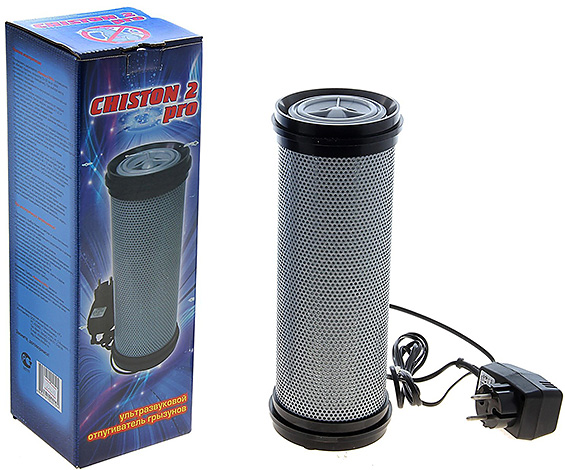
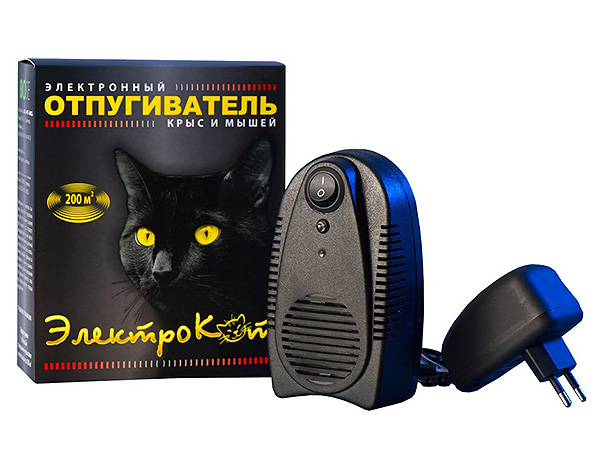
In any case, remember that in addition to rats, pets also hear ultrasound (cats, dogs, guinea pigs, decorative rats) - animals are afraid of the sounds of repellers and feel discomfort near the included device.
But it’s better not to even look at cheap tweeters with a price of up to 1000 rubles (especially Chinese-made). Rats usually do not react to them at all.
Feedback
“They told me that an ultrasonic repeller is a good remedy for rats, but something did not impress him in any way. Recently, they put an appliance with the dashing name Electrocot, it works with us all day and all night, and the result is zero. The whole ceiling is already in the holes! ”
Pavel, Samara
Folk rodent repellents are even less reliable. Rats quickly get used to them, and some are often not afraid from the beginning. And yet, if you really want, then you can try to drive them by such means:
- Elderberry - its berries are advised to be laid out in places of frequent meetings with rats. Ostensibly, the animals know that they contain hydrocyanic acid, and are afraid to even come close to them. However, there is no evidence of the effectiveness of this remedy;

- Red pepper - they say that it strongly irritates the olfactory receptors in animals;

- Black root, or rat-rat - it is popularly believed that this plant is unpleasant to rats because of its specific smell. It is laid out in bunches in different places of the room, but only where domestic animals cannot find it - this grass is very poisonous;

- Broken glass - supposedly, rats cut fingers on their paws when they run along it;

- Strongly smelling liquids - vinegar, gasoline, kerosene, whiteness. If they are poured into the holes of rats or treated with them those surfaces on which animals often run, this will create significant discomfort to pests. Still, rats are cautious and suspicious, and do not like strong new smells. But first, think about whether you yourself want to live in a room in which you constantly stink (and strongly) of gasoline or bleach. And do not forget about the fire hazard;

- Carbide - it is recommended to lay out in bowls and regularly update. When interacting with air moisture, acetylene with a small admixture of arsine and phosphine is released from technical carbide. The last two gases are not only unpleasant in smell, but also poisonous. However, this method of scaring off rodents is better not to use, since a mixture of acetylene with air is extremely explosive.

On a note
Sometimes they try to use smoke bombs against rats. It is important to choose the type of checkers: for example, smoke from sulfur smoke bombs can really poison rodents. But insecticide-repellent and colored smoke bombs at best will cause discomfort to pests.
Meanwhile, it is useful to consider that the use of such funds at home is prohibited. For this reason, by the way, in principle there is no domestic aerosol from rats, and all gases are used against rodents only by specialists and only in non-residential premises.
Means for catching rats and mice
All funds of this type can be divided into three large groups:
- Traps that kill rats;
- Live traps in which, as the name implies, rats (mice) remain alive;
- Adhesive against rats and mice, as well as adhesive traps based on such adhesives. Generally speaking, they catch rodents without killing, but in fact, after gluing, the animals have practically no chance to stay alive ...
Of the traps, the most popular are crush dies (mousetraps). For mice, the usual ones are small, and for rats they are large. They are quite effective, and work best when there are few rodents in the room. Their main drawback is a consequence of their main advantage - the crush has a very strong trigger spring. If a child or, say, a cat accidentally steps on a trap, the device may injure him. Therefore, these funds are used where no one but rats finds them.

On a note
Similar to crush in efficiency, but even more dangerous, arc hunting traps. Such a tool, of course, will immediately kill a rat, and a cat or dog can easily break a paw.
There are completely safe tunnel traps, but rats are less common. Mostly they are used to catch mice that are more willing to cut the thread to get to the bait.
The designs of live traps are also very diverse - such devices can be made from various tools at hand, including buckets, pots, cans, plastic bottles, or can be bought for relatively little money (effective traps in online stores cost an average of 200-300 rubles and higher). The main problem with their application is the need to do something with the caught animal. If you are afraid of rats and definitely do not want to kill the animal with your own hands (or feet), do not use these funds.
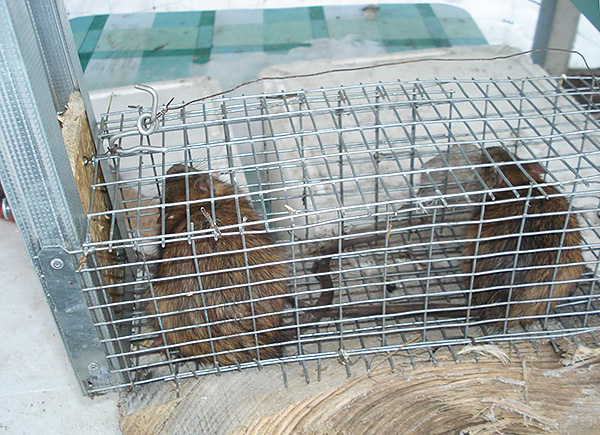
The situation is similar with adhesives. A rat or mouse stuck to the site suffers for a long time, being unable to peel off, and it also needs to be killed. In principle, you can peel it off with vegetable oil, but what to do with it after that? ..

As a result, if you catch rats, it is better to do this with traps, which in one fell swoop will solve two problems at once: they will catch and kill the pest.
Keep in mind that traps and live traps work well if there are one or two rats in the room. After catching one animal, the others will not even come close to the dangerous device, and it will have to be replaced by other means. The situation is simpler with mice - they are not so careful, and you can catch them all with one trap.
Finally, if the use of poison, repellers or traps seems too complicated, and you don’t feel like wasting time and effort on this activity, then the experts of the disinfestation services are always ready to come to your aid. Choosing such a service is also not always an easy task, but at least this option will save you the trouble of laying out poisons, charging traps and collecting rat corpses around the apartment. As they say, any whim for your money ...
If you have personal experience in fighting rats or mice, be sure to share the information by leaving your review at the bottom of this page: what tool did you use, were there any difficulties with this, and whether the labors brought the desired result.
A simple rat trap that allows you to destroy all rodents in the house without the use of poison
Interesting video about rat invasion and methods of dealing with them


